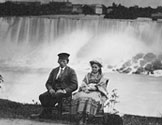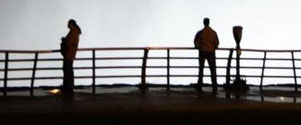

|
||||||||||||||||||||||||||||||||||||||||||
|
| ||||||||||||||||||||||||||||||||||||||||||
 |
 |
 |
 |
 The Saint Who Preached in Pendleton In the mid 1830s the Catholic Church in Western New York was still in its infancy. Not until the building of the Erie Canal did a substantial number of Catholics live in what is now Niagara and Erie counties. The Diocese of New York City encompassed all of New York State. St. Louis’ Church in Buffalo, founded by French and German Catholics, was considered the “mother church” of Western New York. Catholics living in outlying areas had no recourse when it came to worship. Many held prayer services in their homes but without the benefit of a priest, Mass could not be said. In addition, baptisms, weddings and funerals also could not be performed. With a surge of German and Irish Catholics permanently settling here, their spiritual needs became a great concern to the Church leadership headquartered downstate. Meanwhile, John Neumann, a young seminarian in Bohemia (now the Czech Republic) was anxious to become a mission priest in the United States. When his request to be a missionary priest for the Diocese of Philadelphia was denied, he decided to travel to America even through he did not have an assignment anywhere. When he arrived in New York he went to see Bishop Dubois who immediately ordained him and sent him out as a mission priest to Western New York. Father Neumann left Albany on July 4, 1836 on an Erie Canal packet boat and arrived in Buffalo nine days later. After a brief stop in Buffalo to say Mass at St. Louis’ Church, he headed to Sts. Peter and Paul Church in Williamsville, where the present stone structure was under construction. During his first year, Father Neumann walked, and later rode, circuit to North Bush (now Kenmore), Lancaster, Sheldon, Pendleton, Transit, Swormsville, Tonawanda, Niagara Falls and Batavia. He reluctantly learned to ride a horse after overcoming his fear of them. When he was in Pendleton, Father Neumann stayed and said Mass at the homes of Adam Koepfinger and Michael Meyer. The small German population welcomed him with much enthusiasm. Although his visits only occurred about once a month, his presence was very much felt and appreciated in the community. After one year in Williamsville, Father Neumann moved to North Bush for three years, building a log chapel there and continuing to travel the area ministering to the people of the rural areas who had no other access to clergy or the sacraments. The plight of the rural farming families moved Father Neumann to write, “Only a poor priest, one who can endure hardship, can labor here. His duties call him far and near…he leads a wandering life. There is no pleasure, except the care of souls…the Catholic population is continually increasing…many are in extreme poverty. They live in miserable shanties, some with not even a window.” In the spring of 1840, Father Neumann became seriously ill and could not travel for three months. At this time he decided to join the Redemptorists Order and moved to Baltimore. In 1852 he was appointed Bishop of Philadelphia and reluctantly accepted the position. He had never wanted a position of such authority and his health remained poor. He died in 1860 shortly before his 49th birthday. For his missionary work and his devotion to the creation of Catholic school education in Philadelphia and elsewhere, John Neumann was canonized as a saint of the Catholic Church in 1977. The small congregation Father Neumann ministered to in Pendleton continued to grow and other mission priests were sent to the area. Eventually it became known as “The Church on the Canal” even though it did not have a church to worship in. The present church was built in 1855 and dedicated to “The Good Shepard.” It is located on the Niagara County side of Tonawanda Creek Road in Pendleton. Douglas Farley, Director Ann Marie Linnabery Erie Canal Discover Center 24 Church St. Lockport NY 14094 716.439.0431 CanalDiscovery@aol.com www.NiagaraHistory.org |
|